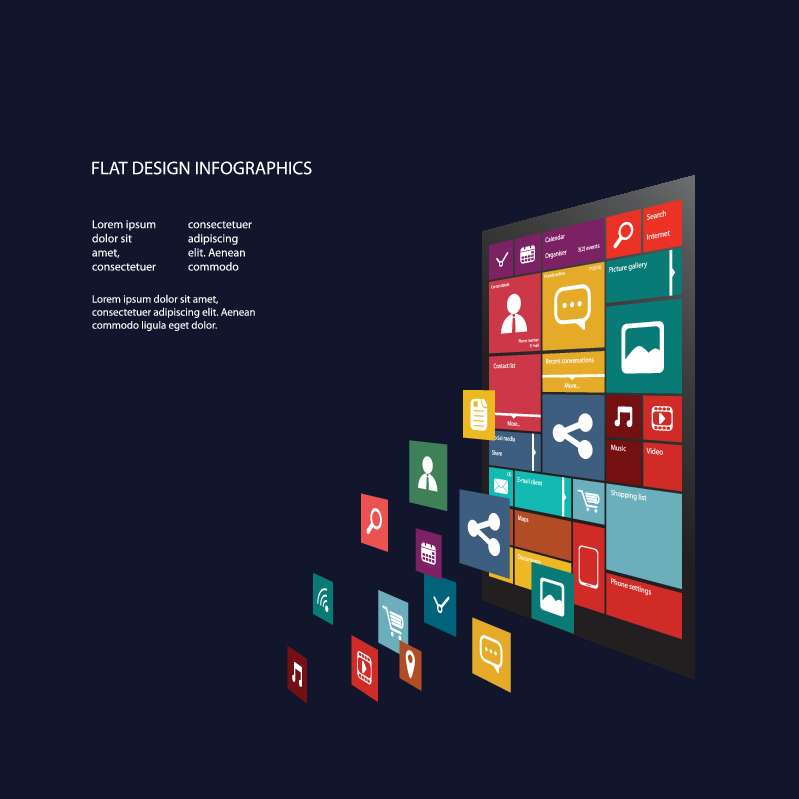
UX research is the in-depth analysis and evaluation of the user's perspective on a product. This can be done with an existing product or for a new one. Research can help validate assumptions about the users, and identify areas of improvement for the product. This allows you to gain a better understanding about the expectations and reluctance of your target audience.
This involves conducting interviews and surveys with the aim of gathering insights into user needs and wants. Unlike traditional market research, however, UX research is performed in conjunction with the design of a product or service. You can identify usability issues early and have more time for them to be fixed. UX research may be performed throughout the entire design or development process.

Researchers should not allow their biases to hinder their ability to produce accurate results in UX research. For example, it is easy to assume that certain user groups have similar behavior to others. Researchers should instead pay attention to the differences in user behavior, and be open to exploring all options.
UX researchers must be problem-oriented and able present their findings in an engaging and clear manner to make it work. They must learn to empathize, understand, and see the needs of users in order to do this. They must also have strong communication skills and be able to design effectively.
UX researchers must work closely with design teams in order to determine their research goals, and to select the most appropriate methods. They can then begin their studies once they have all the tools and techniques they need. There are many different methods to conduct research depending on what stage the project is at and the resources available.
Researchers must always look out for the right questions to ask. This might mean interviewing only a handful of people or running an unmoderated test. A researcher might use quantitative methods like statistical tests to determine the likelihood of certain behaviors if they have a lot of people. Researchers can use the data to create models and make logical design choices.

User experience design refers only to the process of designing a product/service with the user's needs in mind. UX research is essential to achieving this goal. Users behave differently, so designers need to pay attention to this aspect to create an experience that is appealing to their audience.
Before you can start researching, it's important to first define your problem. This will guide you in choosing the most effective method for gathering and analysing data. For example, if you don't see the problem, it might be a good idea to look at a particular demographic or group of people. On the other hand, if the issues seem obvious, you might need to focus on testing a particular feature. No matter the research done, it is crucial that all stakeholders are consulted.
FAQ
What Types of Websites Should I Create?
The answer to this question depends on your goals. If you are looking to build a business from your website, it may be beneficial to focus on selling online products. This can only be achieved by building a solid eCommerce website.
Blogs, portfolios, forums, and other types of websites are also popular. Each type of website requires different skills. For instance, if you want to set up a blog, you will need to learn about blogging platforms such as WordPress or Blogger.
Once you have chosen a platform, it is also important to determine how you can customize the appearance of your site. There are many templates and themes that are free for each platform.
Once you've chosen a platform, you can build your website by adding content. Pages can include images, videos, text and links.
Your new website is ready to be published online. Visitors can view your site online once it has been published.
How Much Does It Cost To Create An Ecommerce Website?
This depends on your platform and whether you hire a freelancer or go through a service provider. The average eCommerce site starts at $1,000.
Once you choose a platform to use, you can expect a payment of anywhere from $500 to $10,000.
If you're planning on using a template, you probably won't pay more than $5,000. This includes any customizations required to reflect your brand.
What does a UI designer do?
A user interface (UI) designer creates interfaces for software products. They are responsible for designing the layout and visual elements of an application. Graphic designers can also be included in the UI design team.
The UI Designer should be able to identify problems and solve them.
A UI designer should have a passion for technology and software design. The field requires that the designer understands all aspects of it, from designing ideas to writing code.
They should be able to create designs using various tools and techniques. They must be able think creatively and find innovative solutions to problems.
They should be detail-oriented and well organized. They should be capable of quickly and efficiently developing prototypes.
They should be comfortable working with clients, both large and small. They must be able to adapt to various situations and environments.
They should be able and willing to communicate effectively with others. They must be able express themselves clearly and concisely.
They should be well-rounded and possess strong communication abilities.
They must be motivated and driven.
They should be passionate about their craft.
Statistics
- It's estimated that in 2022, over 2.14 billion people will purchase goods and services online. (wix.com)
- In fact, according to Color Matters, a signature color can boost brand recognition by 80%. There's a lot of psychology behind people's perception of color, so it's important to understand how it's used with your industry. (websitebuilderexpert.com)
- It's estimated that chatbots could reduce this by 30%. Gone are the days when chatbots were mere gimmicks – now, they're becoming ever more essential to customer-facing services. (websitebuilderexpert.com)
- Studies show that 77% of satisfied customers will recommend your business or service to a friend after having a positive experience. (wix.com)
- The average website user will read about 20% of the text on any given page, so it's crucial to entice them with an appropriate vibe. (websitebuilderexpert.com)
External Links
How To
How can I become a UI designer?
Two methods can be used to become a UI developer:
-
You can go through school and earn a degree in UI Design.
-
You can become a freelancer.
For you to be able to finish school, you must attend college or university. This covers art, business, psychology, and computer science.
You can also enroll in classes at state universities or community colleges. Some schools offer tuition-free programs while others charge tuition.
After graduation, you will need to find employment. If you decide to work for yourself, it is important that you build your client base. It's important to network with other professionals, so they know you exist.
You can also look for opportunities to intern at companies that specialize in developing web applications. Many companies hire interns in order to gain valuable experience before they hire full-time employees.
Once you have built up a portfolio of your work, it will help you land more jobs. Your portfolio should contain your work samples and details of the projects you worked on.
It's a good idea to send your portfolio to potential employers via email.
Freelancers need to promote themselves. You can also advertise your services via job boards like Guru, Indeed, Guru, Upwork, and Freelance.
Freelancers are often assigned by recruiters posting job openings online. These recruiters find qualified candidates for specific jobs.
These recruiters usually provide a briefing outlining the requirements of the job to the candidate.
You are not required to sign long-term contracts as a freelancer. If you want to move ahead, it's best to negotiate an initial payment.
Many designers prefer working directly for clients and not through agencies. This may sound ideal but many people lack the skills.
Agency workers are often well-versed in the industry they work in. They have access to resources and training that enable them to produce high quality work.
These benefits are not the only ones. Agency workers typically receive a higher hourly wage.
The downside to working with an agency is that you won't have direct contact with the employer.
To succeed as a UI designer, you must be self-motivated, creative, organized, flexible, detail-oriented, analytical, and communicative.
Excellent communication skills are also required.
UI designers design websites by designing user interfaces (UI), and visual elements.
They are also responsible to ensure the site meets user needs.
This includes understanding the information that visitors require and how the site should function.
Wireframes are created by UI designers using a variety of tools. Wireframing is a way for them to visualize the layout of a page prior to beginning their designs.
Online wireframe templates make it simple to create your own wireframes.
Some designers only focus on UI design. Others combine UI and graphic design.
Photoshop is used to edit images by graphic designers.
Adobe InDesign is then used to layout pages and layouts.
Photographers capture images using digital cameras or DSLRs.
They then upload the pictures to a photo editing program where they add text captions, filters, and other effects.
After taking the photo, the photographer saves it in a file format that is compatible with the website.
It is crucial to consider all aspects when designing a website.
This includes research and planning, wireframing, prototyping testing, coding, content creation and publishing.
Research – It is essential to do extensive research before you begin a new project.
Planning - After you have completed your research, it's time to start creating a plan.
Wireframing- A wireframe - A wireframe represents a sketch of an application or web page.
Prototyping-Prototypes ensure that the final product matches your initial vision.
Testing - To ensure that the prototype works correctly, it should be subject to multiple rounds of testing.
Coding - Coding refers to the process of writing computer code.
Content Creation - Content creation covers everything from writing copy to managing social media accounts.
Publishing means uploading files onto a server and making the site accessible.
As a freelance UX/UI designer, you will need to learn about different projects.
Some companies may only need wire frames while others require complete prototypes.
Depending on which type of project you accept you might be asked to do specific tasks.
You might, for example, be asked to create multiple wireframes if you're being hired to do wireframe design.
If you're required to build a complete prototype of a website, you may also be required to design a fully functional version.
Regardless of the type of project, it's important to have strong interpersonal skills.
Referrals are the most common way that clients hire freelancers. You must establish solid relationships with potential employers.
You must also be able communicate clearly both verbally as well as in writing.
A portfolio is an important part of any freelancer's arsenal.
It is a showcase of your work and a demonstration of your ability produce high-quality outputs.
Online portfolios can help you do this.
Find websites similar in your niche to get started.
Then, search these sites to see how each one presents its services.
After identifying the best practices that you believe to be most successful, you can go ahead and implement them.
It is also a good idea to include links in your resume to your portfolio.